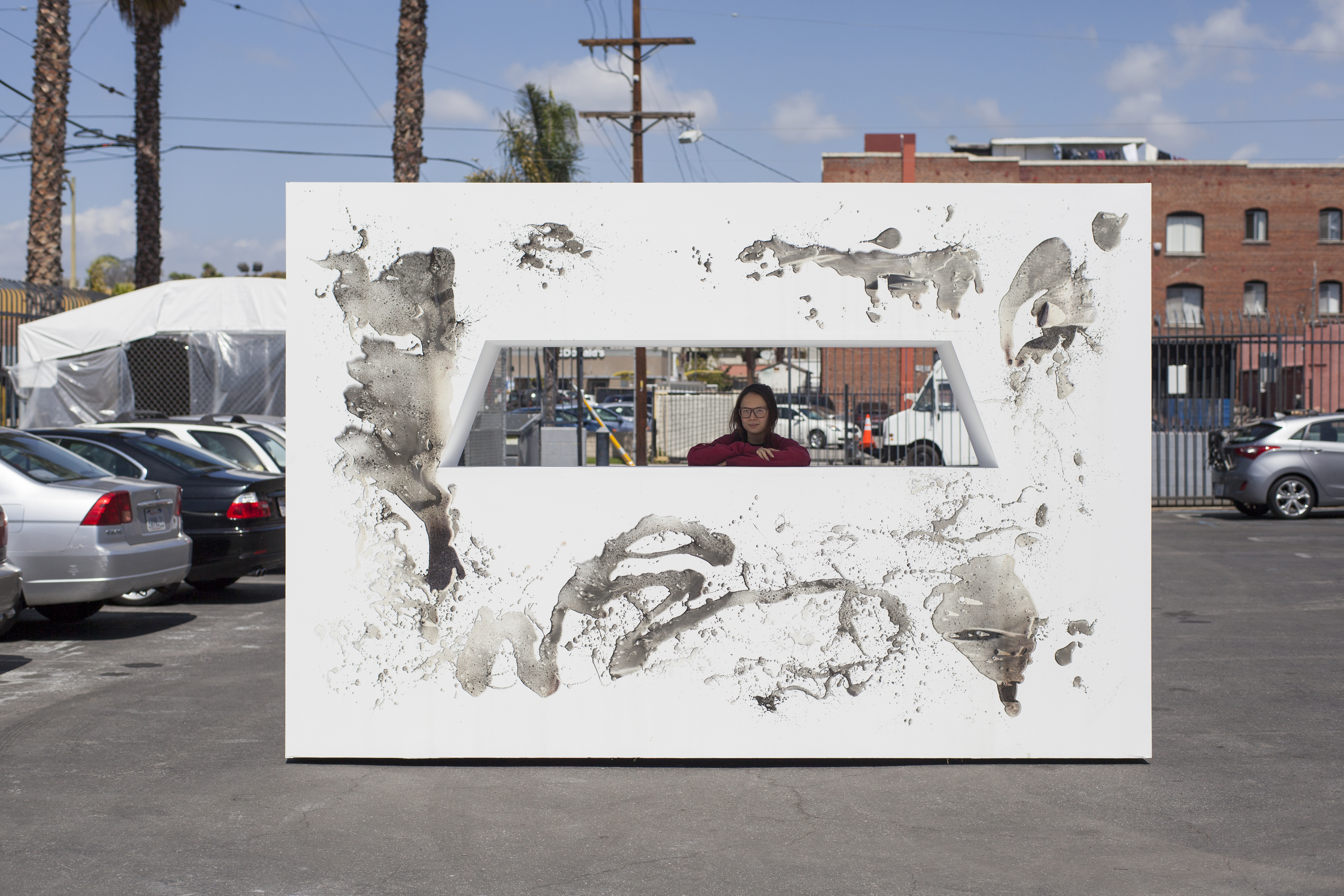
On a coffee table littered with shaped glass, long spills of wax and a plaster impression of a hand, rests a sweet potato past its prime. Long sprouts stretch like fingers from its wrinkled rust-brown skin, fading from red to yellow to green at the leafy tips. “I’m not sure what to do with it,” says artist Kelly Akashi of the baroque spud. “A photographer was in here and thought I should just photograph it. But, I’m not convinced.”
It’s an understandable dilemma: the unmediated potato already fits right in among the lumpy, bodily, slick, stringy and bright objects covering nearly every surface of Akashi’s studio. The artist is known for casting her own hands and fingers in fleshly transubstantiations of bronze, wax and silicone, and for intertwined taper candles, in gradients of vibrant taffy hues, their wicks sometimes tied in nautical or macramé braids. In preparation for her solo show at SculptureCenter this September, table and floor are covered with knobby blown glass globe-and vase-like, sometimes tuberous forms in dozens of colors—opal, amber, milky gold and cloudy seafoam volumes, pulled and folded to translucence.
As much as the results, Akashi seems taken with the alchemical intricacy of the processes she uses. She has, for example, made a detailed study of the history of the candle. “Akashi is incorporating elements such as time, fire, air and other seemingly intangible phenomenon into sculptures that embody these qualities in solid form,” explains the show’s curator, Ruba Katrib. The tiered wooden furniture that the artist arranges with glass and bronzes are also caked with variegated splatter from candles burned while the work is on display; wax runs off the sides like stalactites. It won’t be cleaned off, she says—only added to. The form hardens and you can’t go back in, but at the same time, nothing is ever really final.
Photography is in Akashi’s bag, too. Her glass works become subjects for photograms probing their opacity and transparency. Akashi points to where, in one of her favorites, refractions from the glass have left smoke-like traces on the emulsion. The optics of a camera are, after all, just high-grade lumps of melted sand… And, as Akashi notes, a glass studio is not unlike a darkroom. At SculptureCenter, Akashi’s sculptures will occupy the basement, an alcoved brick and concrete place with only a drift of natural light. She realized the basement would make a perfect darkroom. The show, aptly titled “Long Exposure,” turns on the idea of illumination. A kind of solar cell rigged to a skylight above the basement staircase will power a bulb inside a green bulge of glass, thin enough in places for the light to seep through. There will be candles, burning and burnt. Akashi will also exhibit a 16mm film, her first in several years, which will brighten one wall of the space with footage of chemical light. This time underground promises to be fruitful for a practice both formally beguiling and technically exact. Indeed, potatoes aren’t the only things that sprout in the dark.










 in your life?
in your life?

